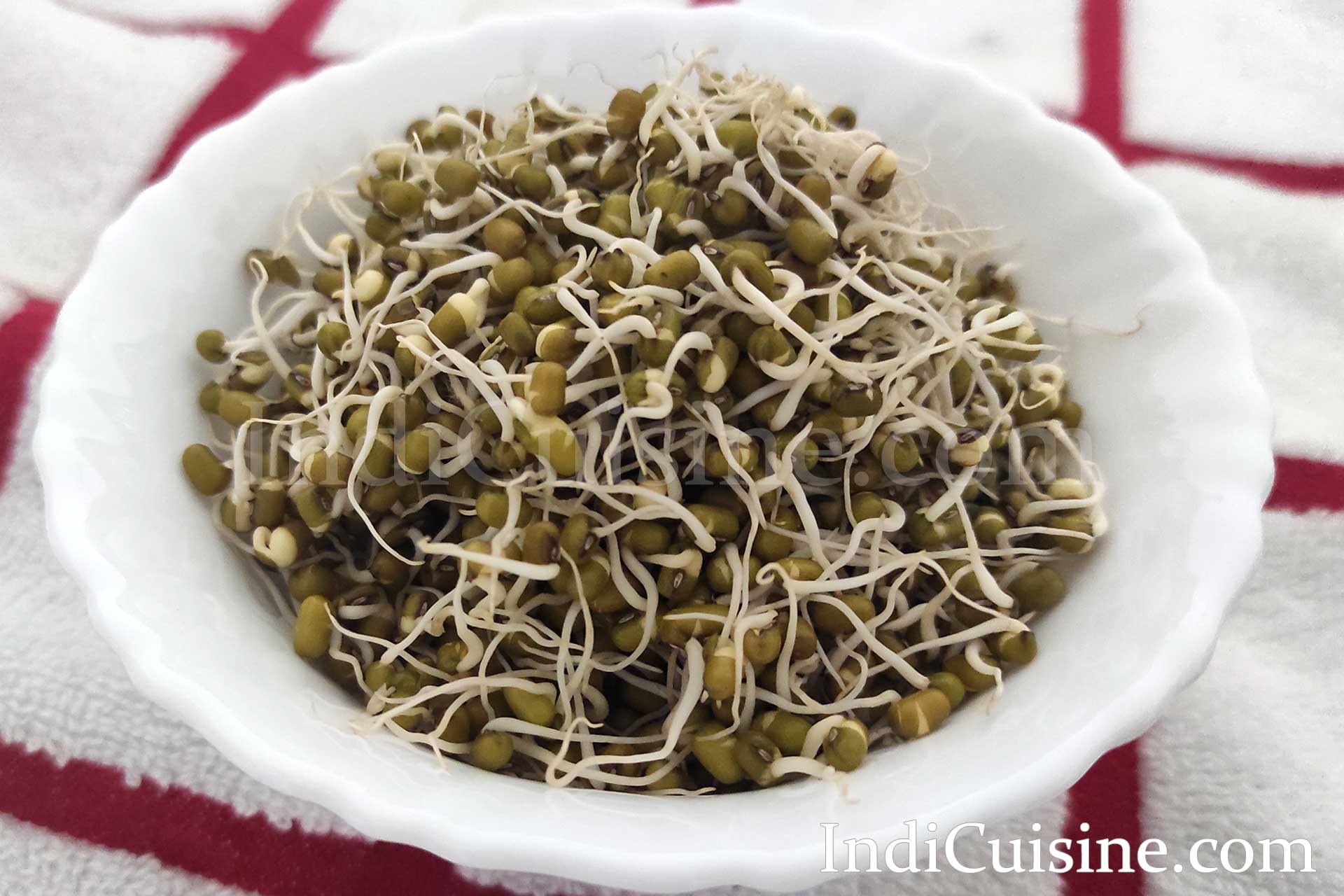
Ingredients:
- 1 cup moong dal (green gram)
- Water – as required for soaking
- Clean, thick cotton/muslin cloth
Instructions:
- Rinse the moong dal thoroughly 2–3 times until the water runs clear.
- Soak the rinsed dal in plenty of water in a bowl for 8–10 hours or overnight.
- Drain the water using a sieve and tie the soaked dal in a clean, damp cotton cloth.
- Place the cloth in an empty cooker or container, cover with the lid, and keep in a warm corner of your kitchen.
- Let it sit undisturbed for 10–12 hours. Check occasionally and ensure the cloth remains damp.
- After 12 hours, open the cloth to reveal fresh sprouts.
- Use immediately or store in an airtight container in the fridge for up to 3 days.
Nutritional Information (General):
- Calories: 70 kcal
- Carbohydrates: 12g
- Protein: 6g
- Fat: 0.5g
- Fiber: 3g
- Iron: 1.5mg
- Vitamin C: 13mg
Cooking Tips & Variations:
- Use filtered water to avoid any contamination during sprouting.
- Winter sprouting tip: Wrap the container in a towel and keep near a warm appliance.
- Add fenugreek or black chickpeas with moong dal for a mixed sprouts version.
- You can briefly steam the sprouts if you don’t prefer eating them raw.
Common Mistakes & Fixes:
- Mistake: No sprouting after 12 hours.
Fix: Check if the cloth dried out or the environment was too cold. Re-dampen the cloth and let it sit longer. - Mistake: Foul smell from the sprouts.
Fix: Sprouting was done in unhygienic or too moist conditions. Discard and start over with fresh dal and clean tools.
Chef’s Tips & Tricks:
- Choose whole moong dal, not split ones, for best sprouting.
- Rinse the sprouts every day if storing for multiple days to maintain freshness.
- You can grow a larger batch and freeze some for later use.
Brand Suggestions:
- Moong Dal: TRS Whole Moong Dal (available at Tesco, Sainsbury’s, Asda, and Indian grocery stores)
- Cloth: Clean muslin/cotton cloth available at Wilko or Amazon UK
- Storage Containers: Sistema or IKEA BPA-free airtight boxes
Equipment & Tools:
- Mixing bowl (for soaking)
- Sieve or strainer
- Cotton/muslin cloth
- Cooker or insulated container
- Airtight storage box (for storing)
Pairing Suggestions:
- Add sprouts to your morning smoothie bowls or salad bowls.
- Use them in chaats, bhel puri, or as a protein topping on toast.
- Pair with lemon juice, salt, and a pinch of chaat masala for a healthy evening snack.
Allergen Information:
- Gluten-Free: Naturally gluten-free (ensure clean prep area).
- Vegan: 100% plant-based and vegan.
- No Dairy or Nuts: Safe for nut- and dairy-free diets.
Recipe Instructions Step by Step:
Step 1: Rinse & Soak
Rinse 1 cup of moong dal in clean water 2–3 times. Soak it in water for 8–10 hours or overnight.
Step 2: Drain & Tie
After soaking, drain the water and tie the dal in a damp, thick cotton/muslin cloth.
Step 3: Sprouting Environment
Place the tied cloth in an empty cooker or closed container. Keep it in a warm place for 10–12 hours.
Step 4: Check Sprouts
Check after 12 hours – the dal will have sprouted. If not, let it sit longer ensuring the cloth remains damp.
Step 5: Use or Store
Use the sprouts immediately or refrigerate in an airtight box for 2–3 days.
